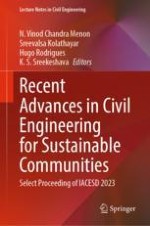2024 | OriginalPaper | Chapter
Conventional and Ensemble Machine Learning Techniques to Predict the Compressive Strength of Sustainable Concrete
Authors : Saad Shamim Ansari, Syed Muhammad Ibrahim, Syed Danish Hasan, Faiz Ahmed, Md Idris, Isar Frogh, Faizan Ali
Published in: Recent Advances in Civil Engineering for Sustainable Communities
Publisher: Springer Nature Singapore
Activate our intelligent search to find suitable subject content or patents.
Select sections of text to find matching patents with Artificial Intelligence. powered by
Select sections of text to find additional relevant content using AI-assisted search. powered by
